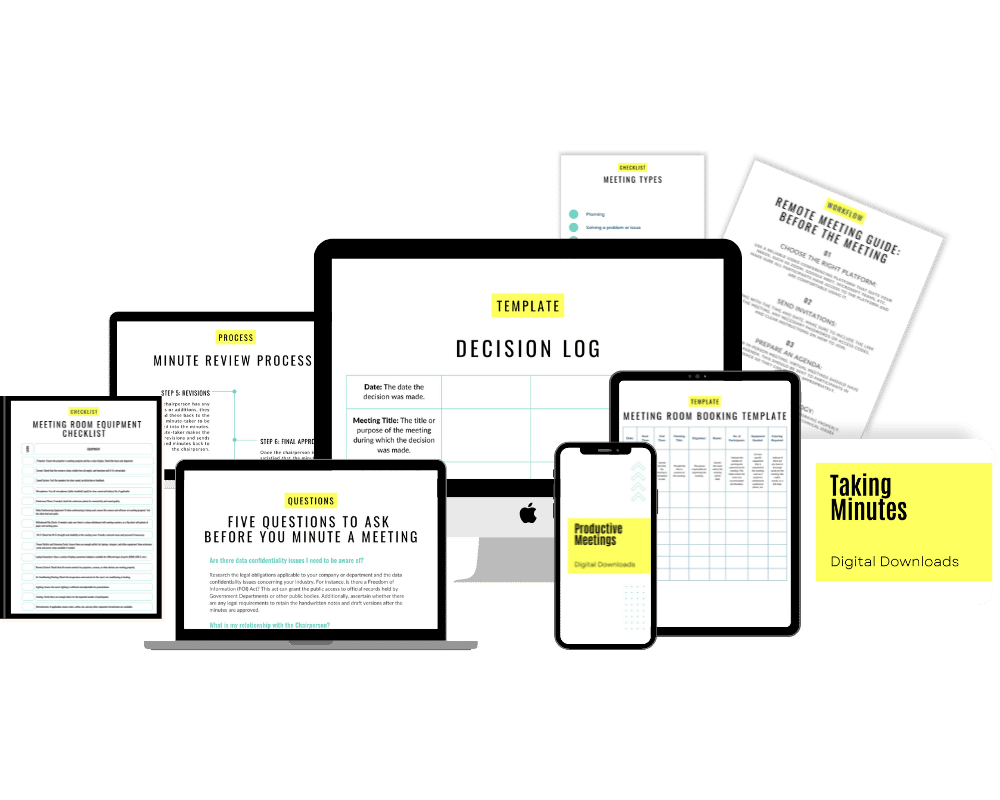Getting minute-taking right
Getting minute-taking right is a crucial aspect of productive meetings. This article will provide a general list of key points to consider when taking minutes. By following these guidelines, you can enhance the quality and usefulness of meeting minutes, facilitating efficient communication and follow-up actions.
Include key details: When capturing meeting minutes, begin with essential information such as the date, time, location, and list of attendees. Additionally, mention the details of the next meeting to ensure continuity. Avoid duplicating extensive information from documents and focus on recording the critical discussion points instead.
Proposal or motion wordings: If proposals or motions are to be debated during the meeting, it is vital to include the exact words used. Ensure you have access to these wordings to reflect them in the minutes accurately.
Action points and decisions: Document action points clearly, including the responsible individuals and deadlines. It is essential to track the progress of these actions to ensure accountability. Additionally, record any decisions made during the meeting and include relevant changes that will occur as a result.
Consider the audience: Consider who will read the minutes and tailor the level of detail accordingly. Some individuals may require a more comprehensive summary, while others prefer a concise overview.
Information for action: Include any information in the minutes that individuals not present at the meeting may need to act upon. This ensures everyone remains informed and can contribute effectively to subsequent actions or decisions.
Understand the audience and record-keeping requirements: Consider the audience of the minutes, whether internal or external stakeholders. Be aware of any legal or policy requirements for record-keeping within your organisation. If unsure, consult the compliance team or seek independent advice to ensure you meet the requirements.
Learn from previous minutes: When chairing a meeting, review the last minutes to understand the level of detail and format used. If the earlier minutes are overly detailed, consider streamlining the content to provide a concise and practical summary. Respect the readers’ time constraints and ensure the minutes serve as a valuable resource.
Timeliness and signatures: Write up the minutes promptly after the meeting. If necessary, ask the Chairperson to review the minutes quickly before they are distributed. Some minutes, such as those for board meetings, may require signatures, so be mindful of this requirement.
Mastering the art of minute-taking is essential for productive and well-documented meetings. Following the guidelines, you can enhance communication, facilitate practical follow-up actions, and drive organisational productivity.
We invite you to enrol in our Effective Meeting Online Course to further enhance your skills in chairing meetings and mastering minute-taking. This comprehensive program provides practical strategies, techniques, and insights to excel in leading successful meetings, capturing accurate minutes, and fostering productive collaboration.





